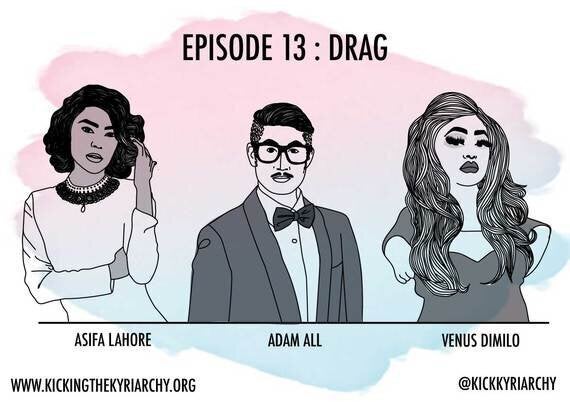
There isn't a day that goes by on the Twitterverse where you won't find someone serving some sort of 'realness', or 'yaaaaas-ing' till their heart's content over a post of Beyonce and her entourage. Without even realising, drag and queer POC (people of colour) culture has seeped into the mainstream. In fact, pretty much the entirety of the millennial* lexicon is saturated with phrases and words that once exclusively belonged to the underground balls of the black drag culture in 80s New York (See Paris is Burning).
But what do we really know about it? Previously a niche TV show confined to a gay TV network, RuPaul's Drag Race has become a staple on any woke or queer person's Netflix list. And rightly so, because it is a m a z i n g. Drag is undeniably a true art form, from the vibrancy of the costumes, to the theatrics of the make up, to the fierce, fierce lip sync battles. We also can't mention drag race without acknowledging the role it has played in increasing the visibility and ergo acceptability of queer culture into the mainstream. But like much of mainstream queer culture, it only tells a very limited perspective of the wonderful, diverse world that is drag.
Queer culture/drag culture for the most part has been synonymous with gay men, and has had very little space for anything else. When was the last time you saw a woman in full drag on RuPaul's Drag Race? Or maybe even a drag king? The answer would be never, as they've never been included. The invisibility of anything but the gay man is a familiar rhetoric in queer culture, and a dishonest one.
When we delved into the topic of drag, we found a plethora of communities and questions that were hidden and unanswered. Where was the platform for British drag artists? Could women really be drag queens? If so, what were they called? What about trans women? What's the difference between a trans woman and a drag queen? Do you always have to dress up as the opposite sex? What about all the other intersecting identities (mental and physical ability, social class etc)?
We're joined by Asifa Lahore, Britain's first out Muslim drag queen, and newly publicly out trans woman, Adam All, sickening Drag King and Venus Dimilo, a disabled non-binary Queen, to help us answer a few of these questions.
We implore you to follow the advice of our guests, to get out there, support your local drag artists and to do your research into the genesis of a wonderful art form. Documentaries like Paris is Burning and Kiki are great places to start.
*We use this word begrudgingly, but it's pretty damn accurate of the target